What is a hellstrip? The no-man’s-land area between the sidewalk and the road, technically belonging to our town, though we, as the homeowners, are responsible for its upkeep.
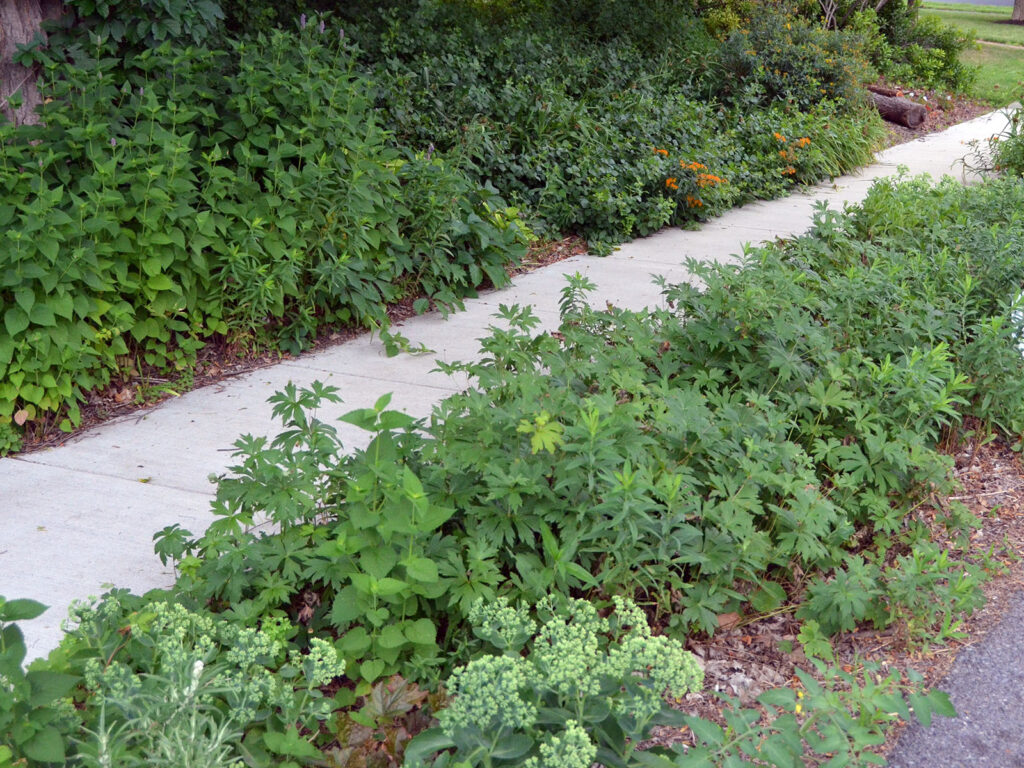
We initially dug up some of the lawn so we could plant a few plants that we like, but which might be too much of a thug to tolerate in a bed with other plants. In this case, it’s Canada anemone — beautiful, but it can be aggressive.
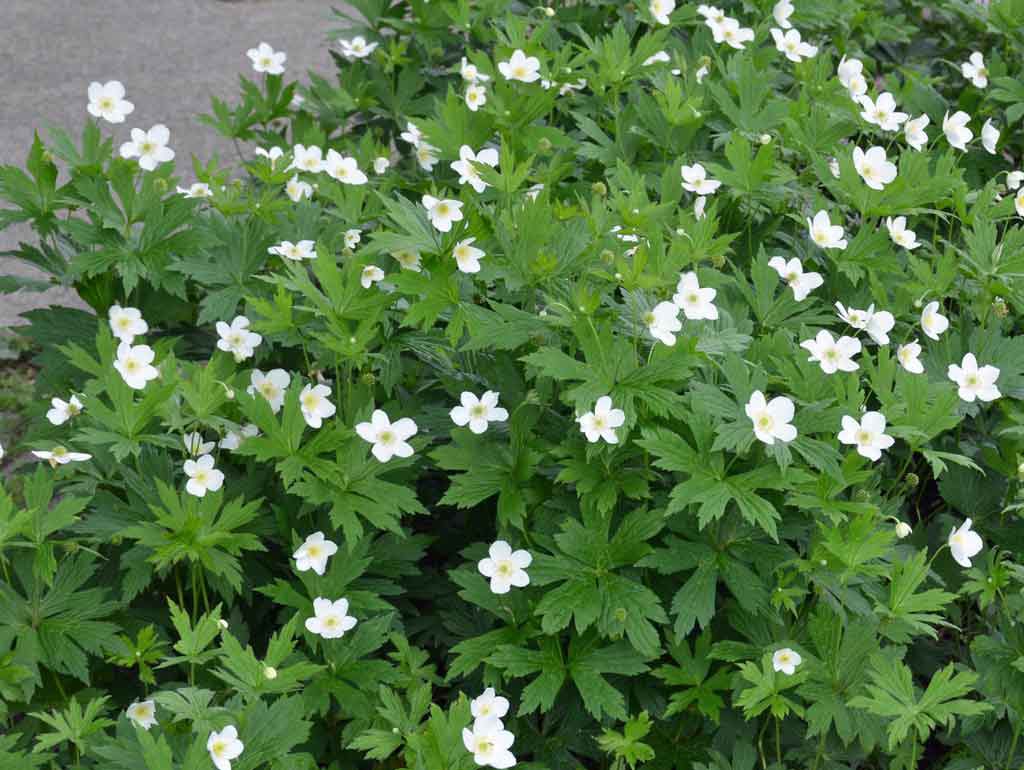
It works well for this purpose. On the other hand, we’ve found that it has survived only on the sidewalk edge of the hellstrip. I guess it just doesn’t like the road salt the town generously applies in winter.
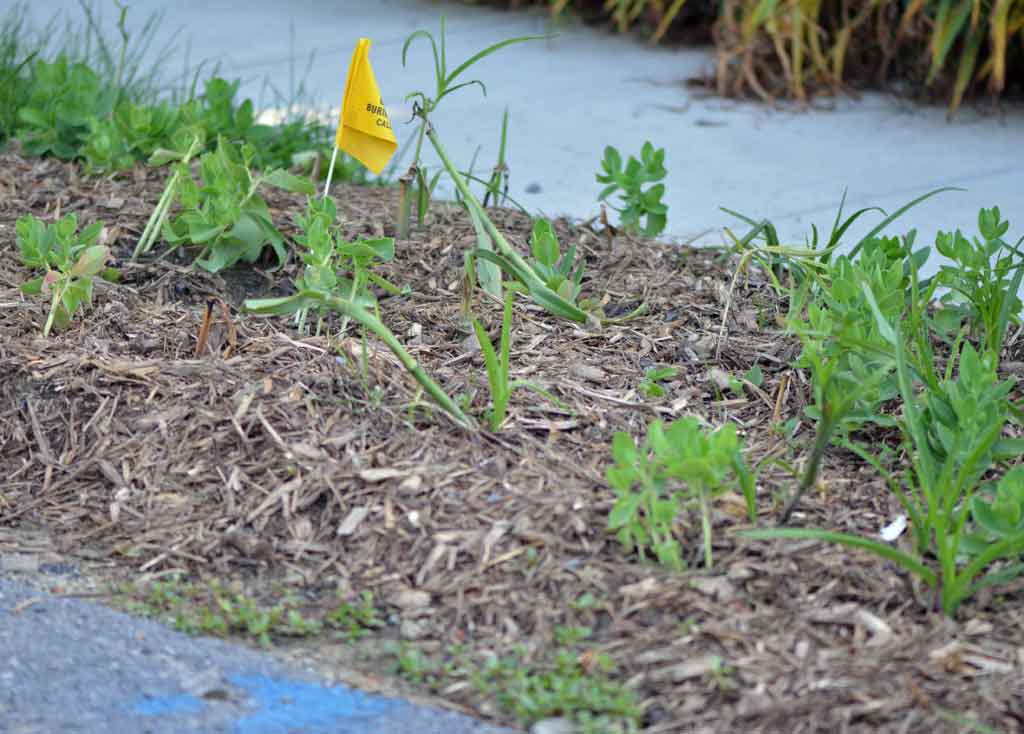
When the power company dug up some more of the hellstrip lawn to replace their underground pipes, we saw an opportunity. Before they could reseed, we dug it up (the soil wasn’t the best) and planted some plants that are pretty robust: spiderwort (Tradescantia) and sedum I keep around for “filler.” These also have the advantage that they’re fairly conventional and limited in height — important qualities for this more public area where anything other than grass is an anomaly in our neighborhood.
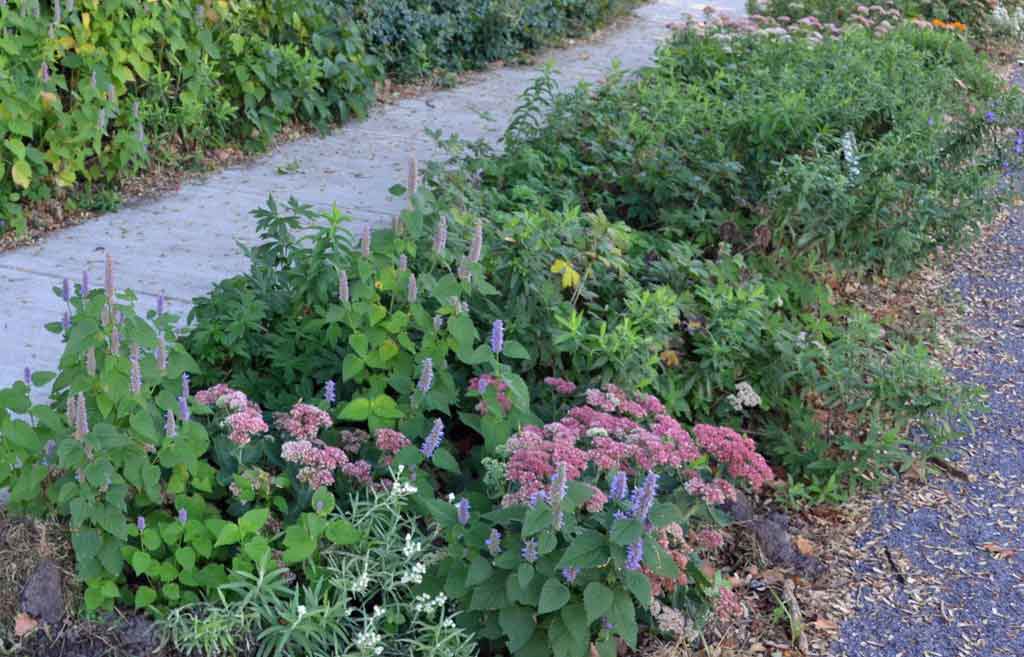
The sedum aren’t native, but they’re benign and great for pollinators. As I need more space for natives, they’re easy to pull up and discard. Equally important is that they don’t seem to be affected by road salt. Highway departments use a lot of road salt here in snowy Central New York.
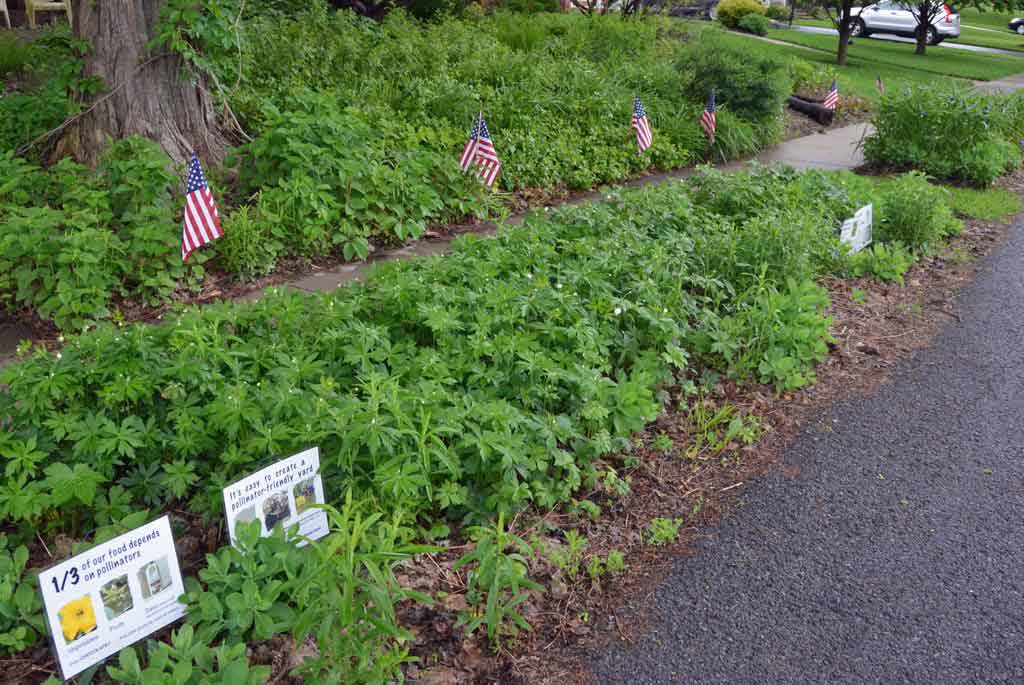
Some of the design principles we used for our hellstrip are:
- Choose plants that are salt-tolerant since we live in an area where streets are generously salted in the winter! (Too bad people’s cars aren’t salt-tolerant…)
- Choose plants that are fairly low-growing and fairly uniform height. I’ve violated this some, but I’m experimenting with pruning joe-pye and others.
- Choose a mix of plants.
- Keep a neat, slanted edge on each section.
- Leave some strips of lawn as paths from the road to the sidewalk so people don’t have to walk far if they park on the street and want to get to the sidewalk.
- Take advantage of the opportunity to grow some plants that might be too thuggish if grown in an area with no boundaries.
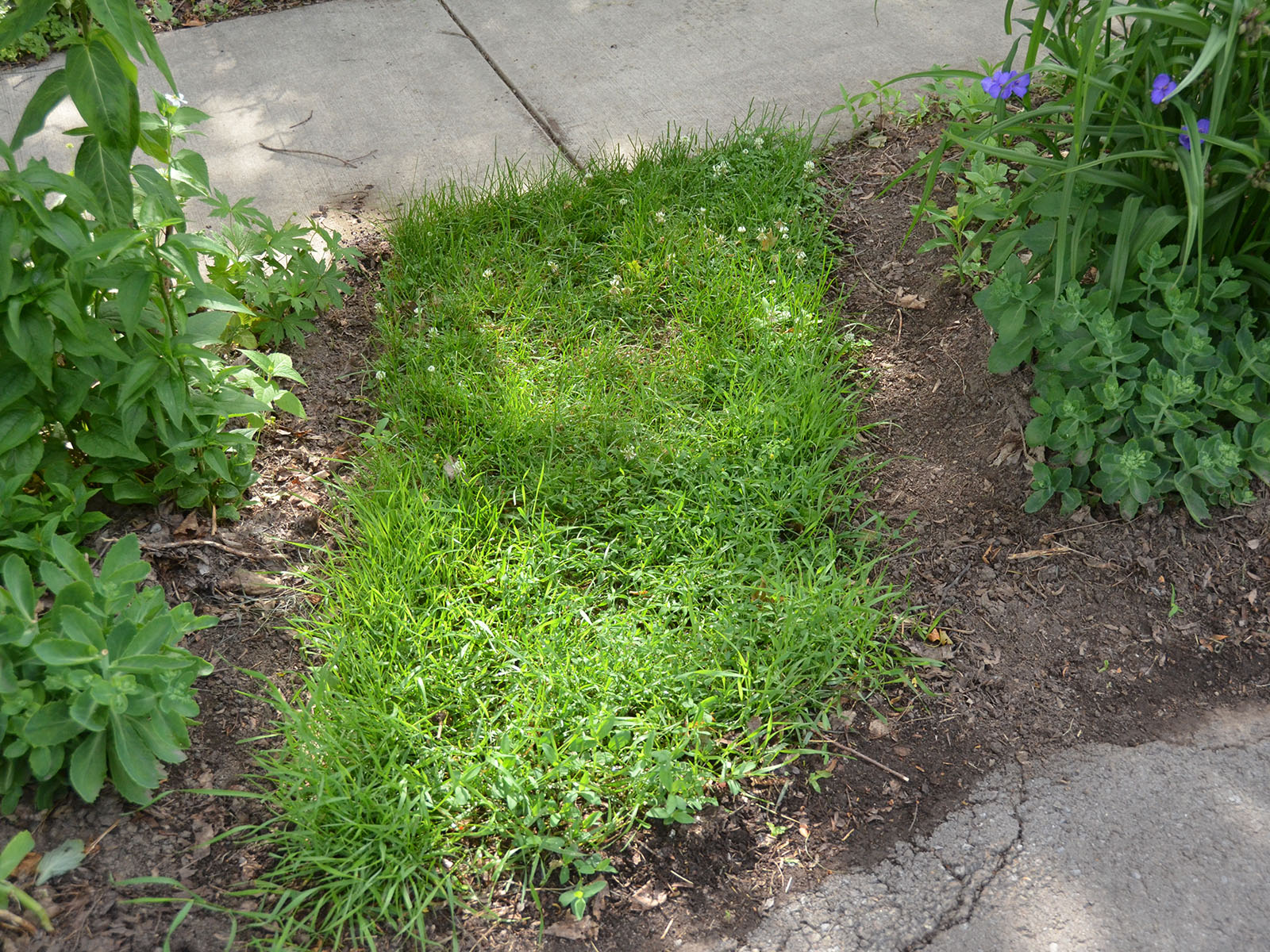
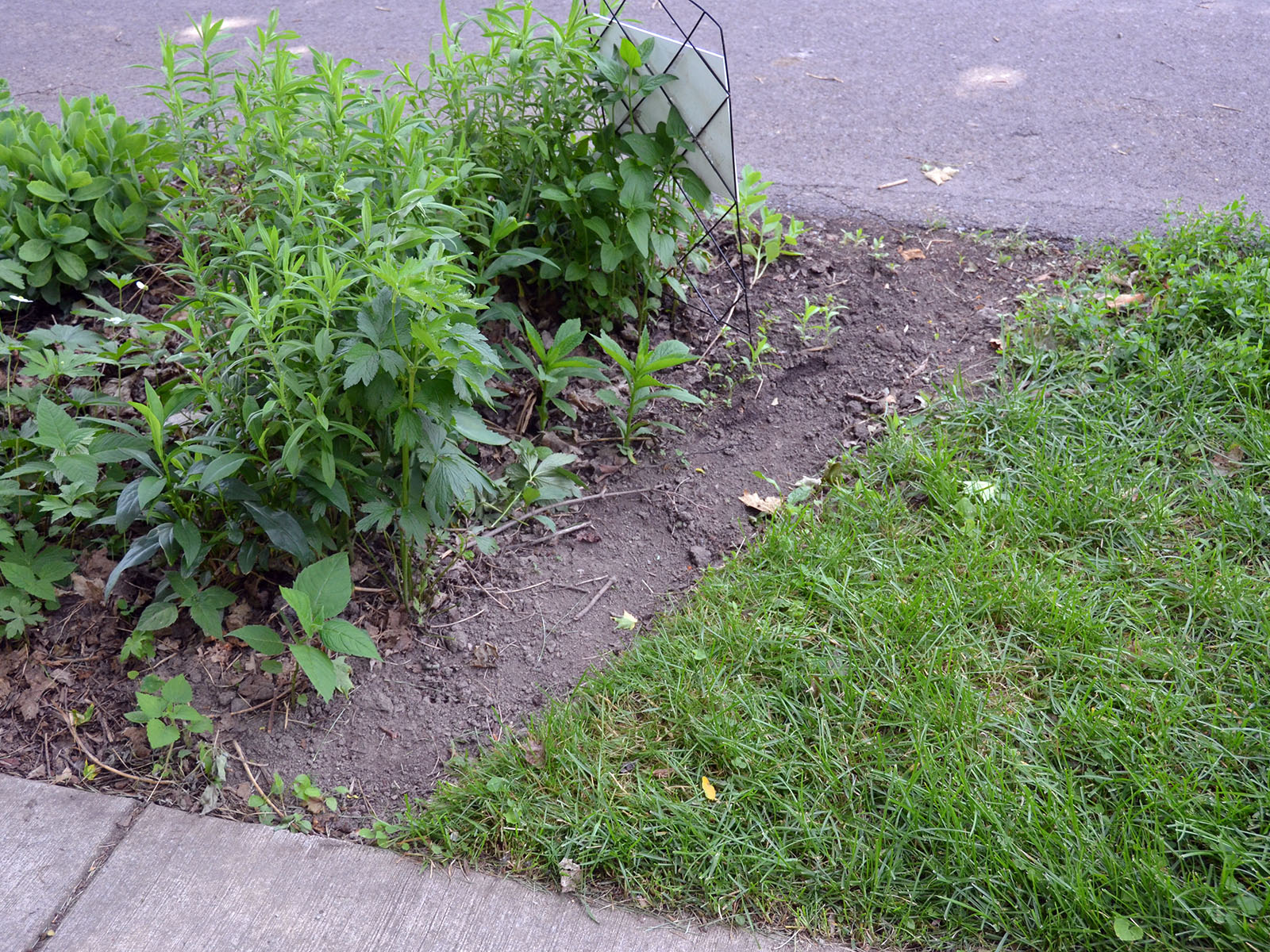
Eventually we learned that it’s important to not only have a neat border by trimming the grass near the planted border, but to leave a strip of plain dirt next to it. It makes a huge difference in appearance!
Resources
- Pollinator Pathways:
- This organization helps communities create connected habitat for pollinators
- Pollinator Pathway:
- Pollinator Pathways Toolkit – a toolkit from Sarah Bergmann, the originator of the concept; watch her TED talk
- Choose Natives:
- Depave:
- Depave.org is a movement to de-pave our cities and replace with plants
- Wild Seed Project:
